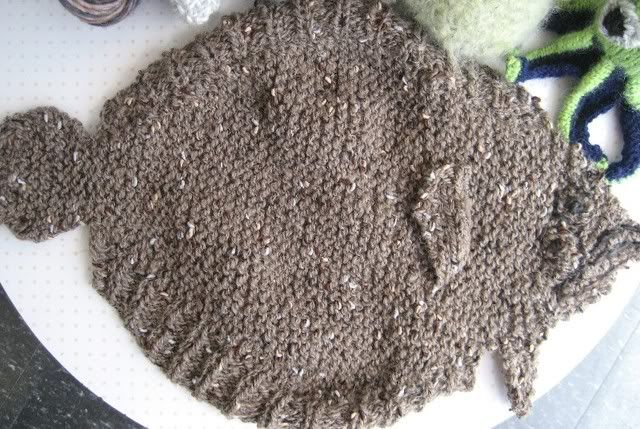 What a mug. Flounders aren’t born with such wonky eyes. When they hatch as larvae they swim in the usual fishy way, but, like all flatfish species, they undergo startling bodily changes at a certain age. One of their eyes migrates to the other side of the body, and they begin to swim around on one flat side. And you thought think human puberty was traumatic! (Photo courtesy of Jeff Rotman.)
What a mug. Flounders aren’t born with such wonky eyes. When they hatch as larvae they swim in the usual fishy way, but, like all flatfish species, they undergo startling bodily changes at a certain age. One of their eyes migrates to the other side of the body, and they begin to swim around on one flat side. And you thought think human puberty was traumatic! (Photo courtesy of Jeff Rotman.)  Atlantic flounders turn up at supermarkets and on menus under many names, including Blackback, Dab, Fluke, Gray Sole, Lemon sole, Rusty flounder, Summer flounder, Windowpane flounder Winter flounder, Witch flounder, and Yellowtail flounder. However, they are naturally vulnerable to fishing pressure, and after a long history of overfishing, habitat damage and bycatch, most stocks remain depleted. You can read the SeaChoice assessment here, and browse the “Best Choice” list for sustainable seafood alternatives.
Atlantic flounders turn up at supermarkets and on menus under many names, including Blackback, Dab, Fluke, Gray Sole, Lemon sole, Rusty flounder, Summer flounder, Windowpane flounder Winter flounder, Witch flounder, and Yellowtail flounder. However, they are naturally vulnerable to fishing pressure, and after a long history of overfishing, habitat damage and bycatch, most stocks remain depleted. You can read the SeaChoice assessment here, and browse the “Best Choice” list for sustainable seafood alternatives.
This fuzzy flounder recently turned up at the


1 comment:
I like your way of the explaining things in such a nice manner. Many people refer to buy plavix online.
Post a Comment